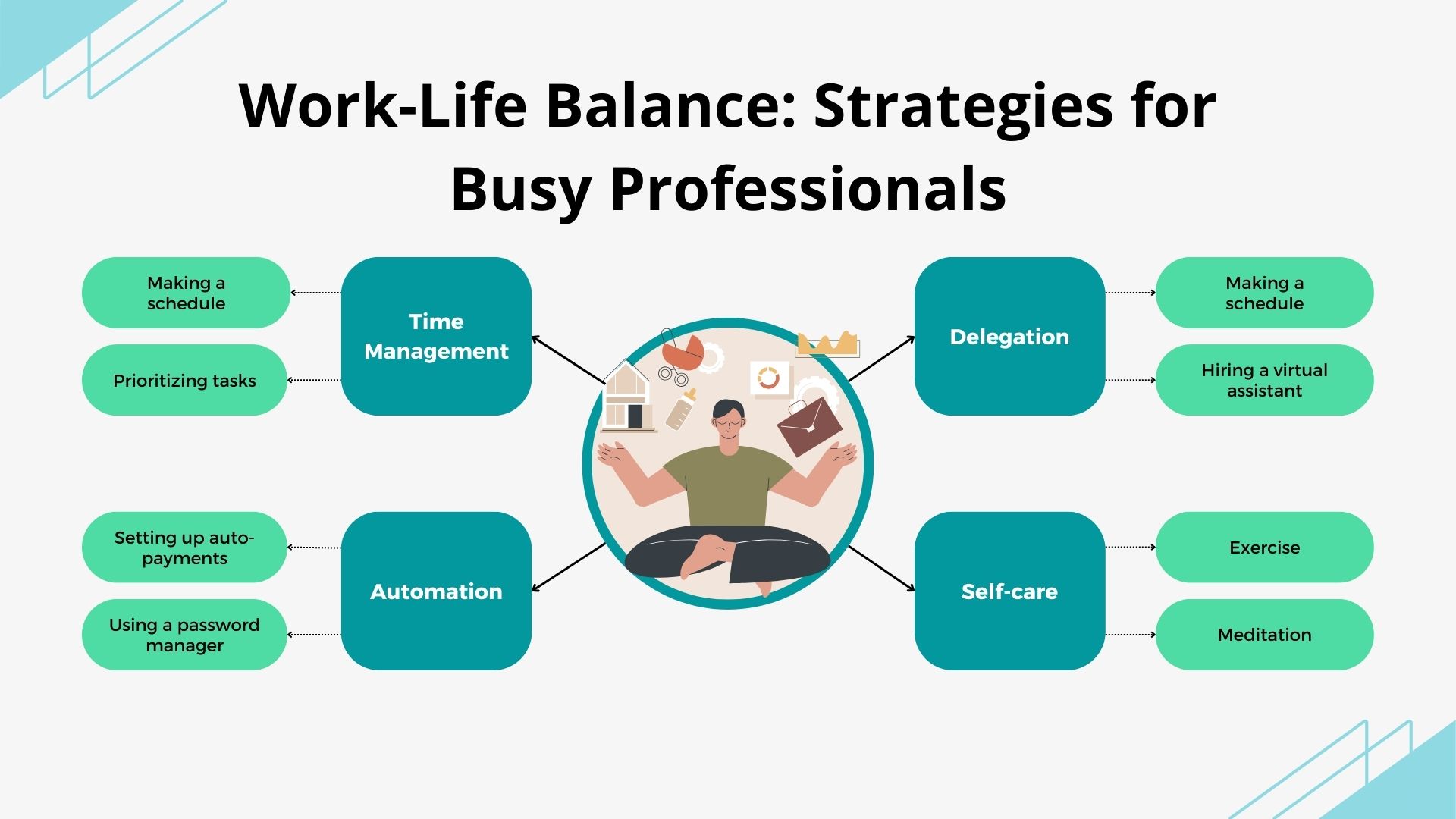In today’s fast-paced world, achieving work-life balance can feel like a constant struggle. However, with the right strategies, busy professionals can find harmony between their career demands and personal life. In this blog, we will explore practical tips to help you achieve a healthy work-life balance, ensuring both professional success and personal well-being.
Understanding Work-Life Balance
What is Work-Life Balance?
Work-life balance refers to the equilibrium between work responsibilities and personal activities. It involves managing professional commitments without sacrificing personal health, relationships, and leisure. Achieving this balance helps prevent burnout, reduce stress, and enhance overall quality of life.
Effective Strategies for Work-Life Balance
Prioritize Your Tasks
Start by identifying and prioritizing your tasks. Make a list of your daily activities and categorize them based on urgency and importance. Focus on high-priority tasks first, and delegate or postpone less critical ones. This approach helps you manage your time efficiently and ensures you accomplish essential tasks without feeling overwhelmed.
Set Boundaries
Establish clear boundaries between work and personal time. Avoid checking emails or taking work calls during personal hours. Create a dedicated workspace at home to physically separate your work environment from your living space. This separation helps you switch off from work mode and enjoy your personal life fully.
Manage Your Time
Effective time management is crucial for maintaining work-life balance. Use tools like calendars, planners, or time management apps to organize your schedule. Allocate specific time blocks for work tasks, personal activities, and relaxation. Stick to your schedule as much as possible to ensure you dedicate time to both work and personal life.
For more tips on time management, visit our blog on [Effective Time Management Tips](link to your blog on time management tips).
Prioritizing Personal Well-Being
Practice Self-Care
Self-care is essential for maintaining physical and mental health. Incorporate activities that promote well-being into your daily routine, such as exercise, meditation, and hobbies. Regular physical activity reduces stress and boosts energy levels, while mindfulness practices help you stay present and manage stress effectively.
Explore mindfulness practices in our blog on [Mindfulness Practices for Stress Reduction](link to your blog on mindfulness practices).
Take Breaks
Regular breaks throughout the workday can improve productivity and reduce stress. Step away from your desk for short breaks to stretch, walk, or simply relax. These breaks help you recharge and maintain focus when you return to work.
Maintaining Healthy Relationships
Spend Quality Time with Loved Ones
Strong relationships are a key component of a balanced life. Dedicate time to connect with family and friends. Engage in activities you enjoy together, such as dining, exercising, or simply chatting. Building and maintaining strong relationships provides emotional support and enhances your overall well-being.
Communicate Your Needs
Open communication with your employer and family is crucial for achieving work-life balance. Discuss your needs and boundaries with your employer to find flexible work arrangements that suit your lifestyle. Communicate with your family about your work commitments and personal time to ensure mutual understanding and support.
Creating a Supportive Work Environment
Seek Flexibility
Many employers offer flexible work arrangements, such as remote work or flexible hours. Take advantage of these options to create a work schedule that fits your personal life. Flexible work arrangements help you manage both work and personal responsibilities more effectively.
Delegate and Collaborate
Delegating tasks and collaborating with colleagues can reduce your workload and prevent burnout. Identify tasks that others can handle and delegate them appropriately. Collaborate with your team to share responsibilities and achieve common goals more efficiently.
Conclusion
Achieving work-life balance as a busy professional requires intentional effort and effective strategies. By prioritizing tasks, setting boundaries, managing time, and prioritizing personal well-being, you can create a harmonious balance between work and personal life. Remember to practice self-care, maintain healthy relationships, and communicate your needs to create a supportive environment. By implementing these strategies, you can enjoy a fulfilling and balanced life.



Leave a Reply